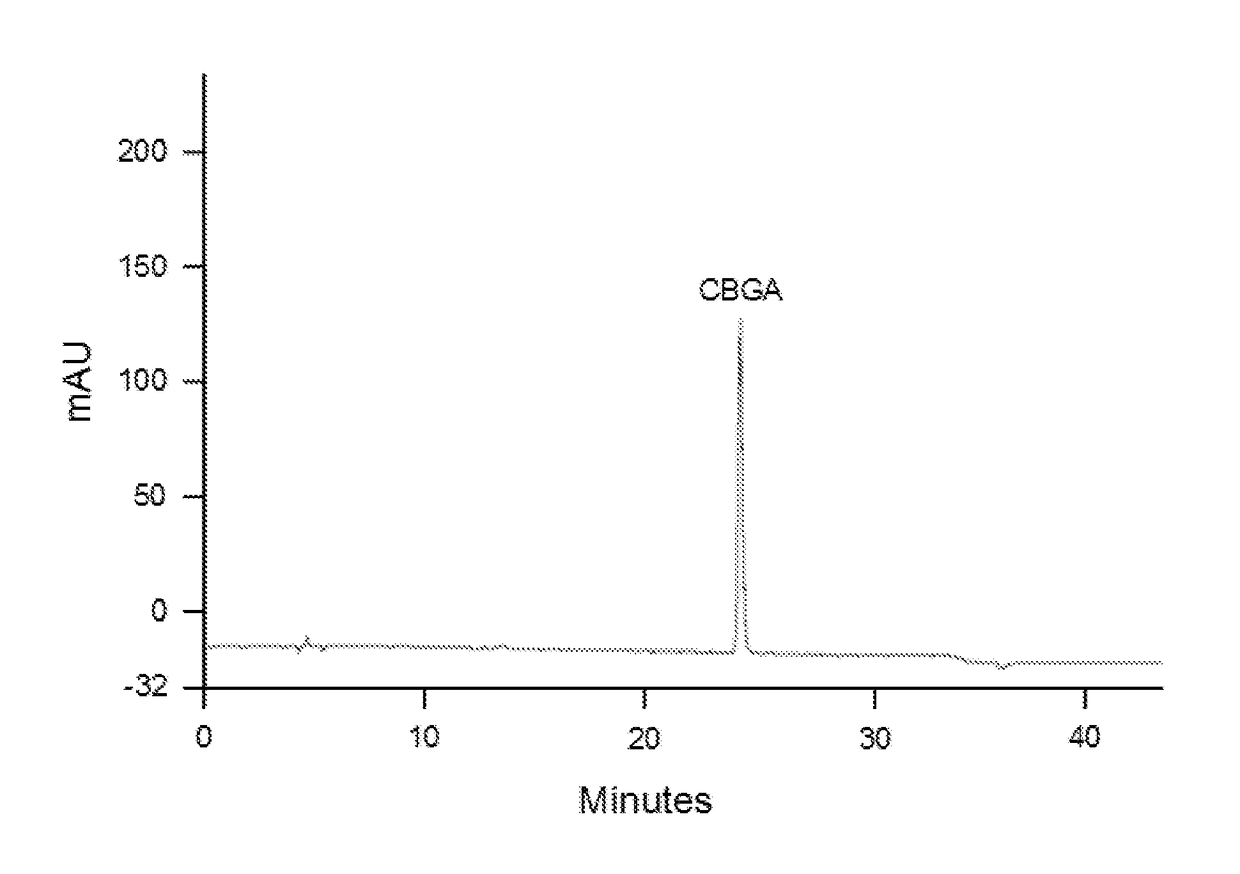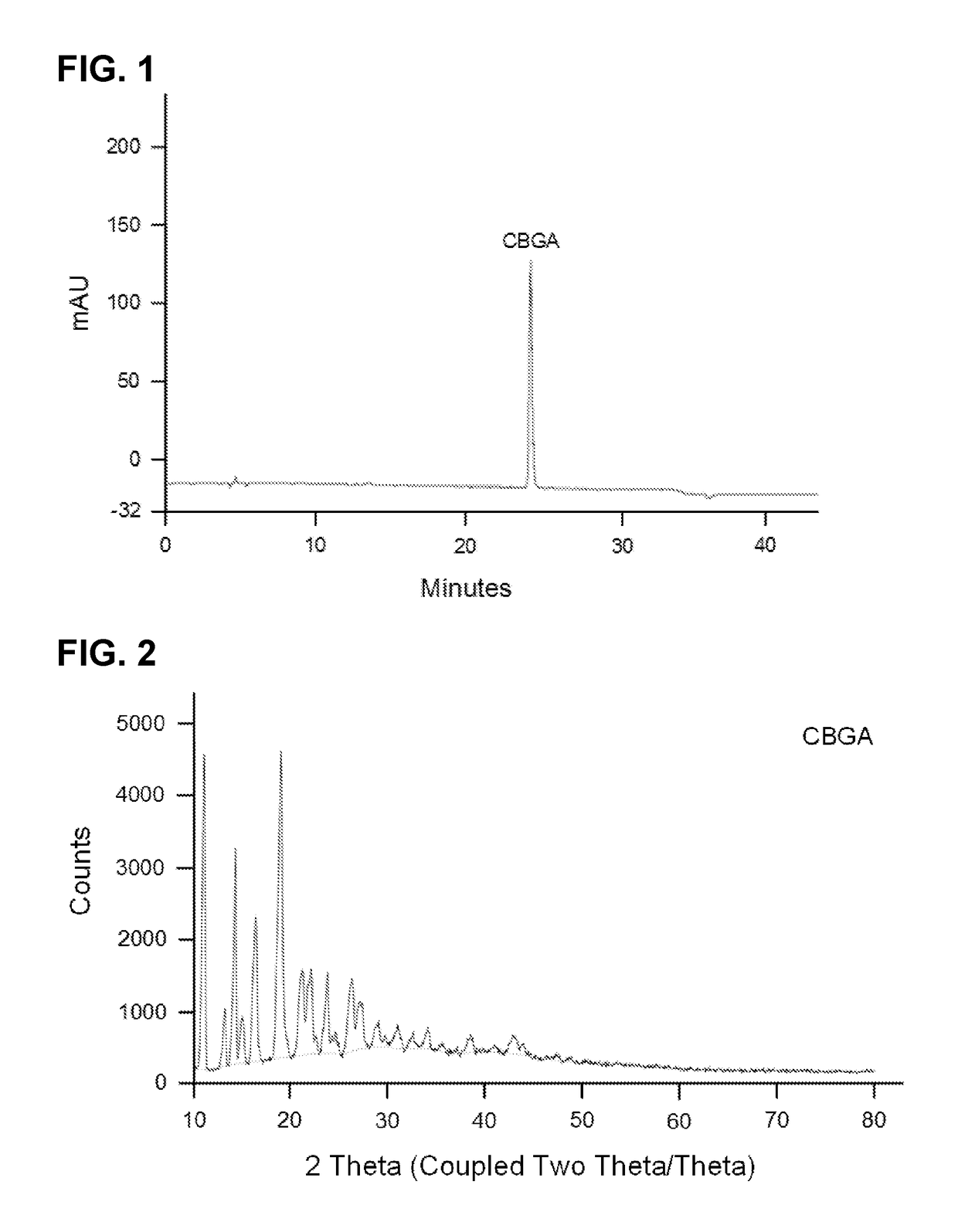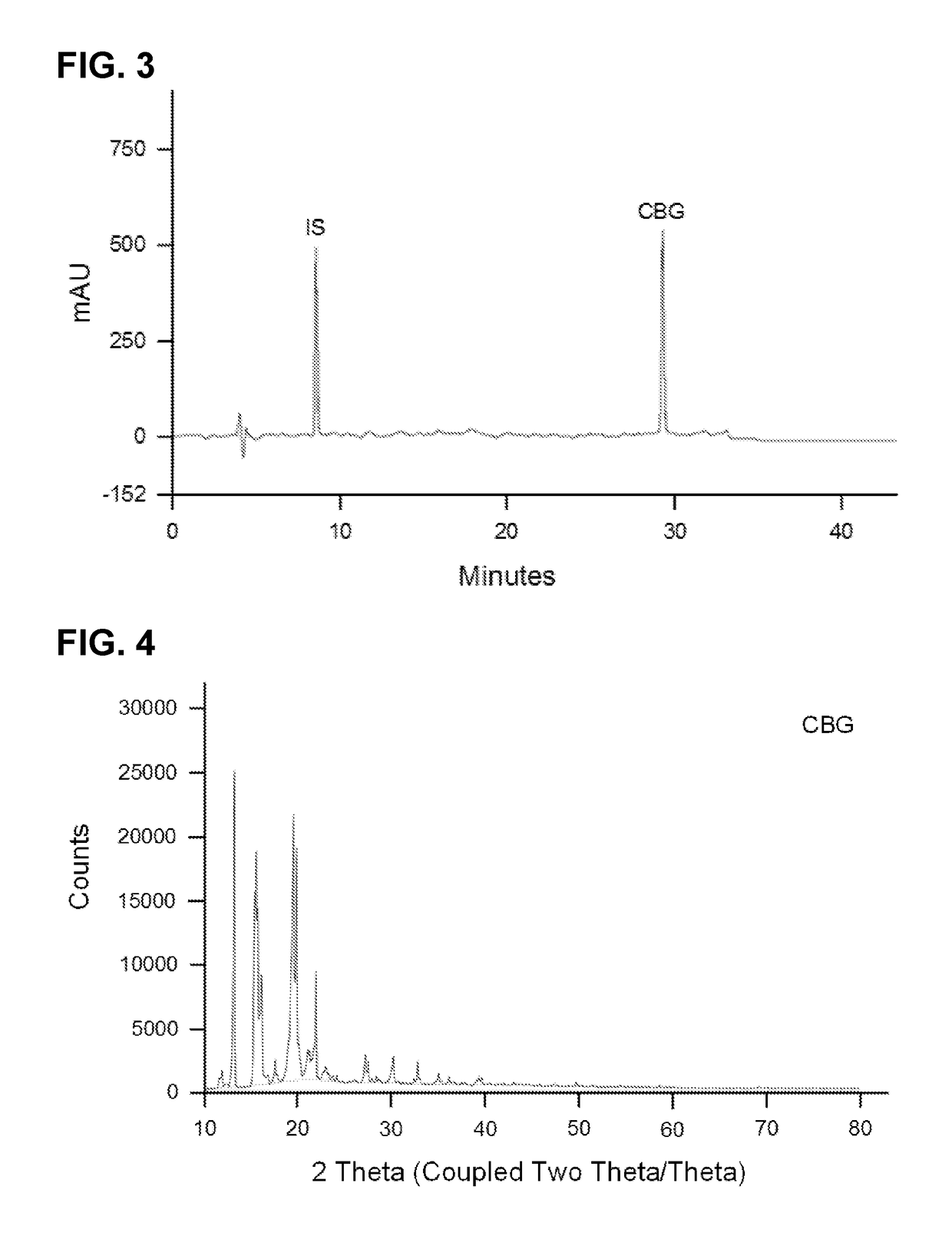Methods of purifying cannabinoids, compositions and kits thereof
a cannabinoid and compound technology, applied in drug compositions, separation processes, cardiovascular disorders, etc., can solve the problems of difficult to maintain control over the proper dosing of medicinal i>cannabis, the negative impact of some of the constituents of i>cannabis /i>smoke, and the accelerated pulmonary decline of heavy i>cannabis /i>use through smoking, etc., to achieve the effect of high yield
- Summary
- Abstract
- Description
- Claims
- Application Information
AI Technical Summary
Benefits of technology
Problems solved by technology
Method used
Image
Examples
example 1
Isolation of CBGA from Plant Material
[0280]Maceration of 150 g of plant material of Cannabis sativa L. of the Carma variety, with CBGA as predominant, is carried out in 750 mL of hexane for one hour. This procedure is repeated three times. The plant material is filtered and the hexane is evaporated down to a volume of about 100 mL. The extract is then incubated at about 4° C. for about 24 hours in order to crystalize CBGA “raw” material. The CBGA “raw” material is vacuum filtered and the collected mother liquors is evaporated to a volume of about 30 mL to about 50 mL, is incubated at about 4° C. for about 48 hours in order to crystalize the CBGA “raw” material, and is then vacuum filtered. The amount of CBGA “raw” material obtained in this two step process depends on CBGA concentration in the starting plant material.
[0281]The CBGA “raw” obtained is recrystallized with 5 mL of hexane per gram of CBGA two or three more times to obtain CBGA with a purity greater than 90% and about 95%....
example 2
Isolation of CBGA from Plant Material
[0283]This experiment was repeated 3 times, the data shown is the mean of the three experiments. Maceration of 100.5 g of plant material of Cannabis sativa L. of the Carma variety, with CBGA as predominant, was carried out in 1 L of hexane for one hour. This procedure is repeated two times more with 0.75 L of hexane. The plant material was filtered and the hexane was evaporated down to a volume of 65 mL and then incubated at 4° C. for 18 hours in order to crystalize CBGA “raw” material. About 1.54 g of CBGA “raw” material was obtained. The CBGA “raw” material was vacuum filtered and the collected mother liquors evaporated to a volume of 35 mL and incubated at 4° C. for 24 hours in order to crystalize the CBGA “raw” material. About 0.22 g of CBGA “raw” material was obtained. The total amount of CBGA “raw” material obtained in this three step process was 1.76 g, representing a yield of 1.75% by weight of the initial plant material used.
[0284]1.7 g ...
example 3
Isolation of CBGA from Plant Material
[0285]This experiment was repeated 3 times, the data shown is the mean of the three experiments. Maceration of 95.2 g of plant material of Cannabis sativa L. of the AIDA variety (CVPO File number: 20160167 from 14-1-16), with CBGA as predominant, was carried out in 1 L of hexane for one hour. This procedure is repeated two times more with 0.75 L of hexane. The plant material was filtered and the hexane was evaporated down to a volume of 80 mL and then incubated at 4° C. for 18 hours in order to crystalize CBGA “raw” material. About 1.8 g of CBGA “raw” material was obtained. The CBGA “raw” material was vacuum filtered and the collected mother liquors evaporated to a volume of 40 mL and incubated at 4° C. for 24 hours in order to crystalize the CBGA “raw” material. About 0.4 g of CBGA “raw” material was obtained. The total amount of CBGA “raw” material obtained in this two step process was 2.2 g, representing a yield of 2.3% by weight of the initia...
PUM
| Property | Measurement | Unit |
|---|---|---|
| temperature | aaaaa | aaaaa |
| temperature | aaaaa | aaaaa |
| time | aaaaa | aaaaa |
Abstract
Description
Claims
Application Information
 Login to View More
Login to View More - R&D
- Intellectual Property
- Life Sciences
- Materials
- Tech Scout
- Unparalleled Data Quality
- Higher Quality Content
- 60% Fewer Hallucinations
Browse by: Latest US Patents, China's latest patents, Technical Efficacy Thesaurus, Application Domain, Technology Topic, Popular Technical Reports.
© 2025 PatSnap. All rights reserved.Legal|Privacy policy|Modern Slavery Act Transparency Statement|Sitemap|About US| Contact US: help@patsnap.com



